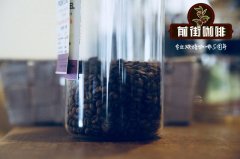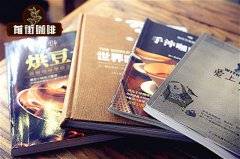What does Arabica coffee taste like? will Arabica coffee taste better?

Professional coffee knowledge exchange more coffee bean information please follow the coffee workshop (Wechat official account cafe_style)
If the variety of coffee is divided by biology, it can be divided into Arabica, Robusta and Liberica. The main drinking varieties in the world are Arabica and Robusta. Rabrika is often overlooked because of its low yield or poor quality.
Generally speaking, Arabica is mainly used in single or boutique coffee, while Robusta is used to make instant coffee. Although Arabica coffee can be defined as premium coffee and Robusta as secondary coffee, it does not have to be classified in this way, and it is more appropriate to distinguish it according to its favorite taste. In terms of taste, the United States and Japan drink light coffee made from Arabica more often, while Europe prefers Italian concentrate made from a mixture of Arabica and Robusta.
The comparison of the three biggest caffeine products in the world is relatively simple:
one. Types of coffee: coffee beans can be roughly divided into three categories: (1) Arabica coffee tree, (2) Robusta coffee tree and (3). Liberica Coffee Tree.
two. Coffee production: Arabica accounts for 69% of the world coffee production, Robusta accounts for 30% of the world coffee production, and Liberica accounts for about 1% of the world coffee production. Therefore, the types of coffee bean trading and coffee futures trading in the world are mainly Arabica and Robusta.
Arabica (Arabica): premium coffee beans with excellent flavor and aroma
Arabica is a representative variety of Ethiopia of origin, and it is also produced in South Africa, Africa, Asia and other countries, accounting for 70% of the world's coffee production. Arabica has weak resistance to diseases and insect pests, so the highland area is more suitable for cultivation, especially the quality of Arabica coffee beans produced in the highland above 1500 meters is the best.
The good quality produced by the effort like this, with a balanced flavor, taste and aroma, can be certified as high-grade coffee beans, mainly used in individual coffee or boutique coffee. The three well-known coffee beans: Kona in Hawaii, Blue Mountain in Jamaica and Moka in Yemen, belong to the Arabica variety. Arabica raw beans have a dark, narrow appearance and are regarded as the highest quality high-quality Arabica varieties, characterized by rich flavors such as sweetness, sour taste and aroma.
Robusta: strong sour taste and strong taste
Robusta is of African origin and accounts for 30% of the world's coffee production. The word Robusta means "tenacity". In fact, this kind of coffee tree is not only resistant to diseases and insect pests, but can survive in any soil, even in the wild. Therefore, it can also be planted in high-temperature areas, growing fast and easy to cultivate, and has the advantage of low price, which is mainly used to mix beans or make instant coffee as the main raw material. Some Robusta produced in India, Africa, Brazil and other places have a strong sour taste, high caffeine content and rich taste. Recently, there are also varieties of Arabusta, which mate with Arabica varieties and have better taste and aroma.
The appearance of Robusta is bulging oval, and raw beans are light brown or yellowish brown with grass green and yellow luster. Compared with Arabica varieties, the taste is more fragrant and lighter, with less sour taste and more bitter taste.
The difference between Arabica vs Robusta Arabica coffee and Robasta coffee:
Coffee beans are the seeds of Rubiaceae Family plants. There are at least 25 main varieties of Coffea Genus, among which the two most important varieties are Arabica species Coffea arabica (Arabica coffee) and Canafora species Coffea canephora (Robusta coffee), also known as Robasta Coffee. Arabica coffee beans account for 70% of the world's production, Robasta coffee beans account for about 30%, Arabica coffee has 44 chromosomes, while Robasta coffee has 22 chromosomes. therefore, Arabica coffee is a crop that cannot be crossed with Robasta coffee.
Coffee trees will be affected by the climate, altitude, soil and other factors, affecting the quality and flavor of coffee beans, such as other agricultural products, such as tea and wine, and so on. So even if you come from the same country, different regions have different flavors, and the price is naturally different. Coffee trees are evergreen plants and are cultivated in tropical and subtropical areas. the most suitable growth conditions are that there should be an appropriate amount of Rain Water and the drainage of the land is good, so they are mostly selected on sloping slopes rich in volcanic ash (rich in organic matter). Therefore, most of the high-quality Arabica coffee beans are harvested manually and carried down the mountain by horses or mules.
The bean shape of Arabica coffee is small, the front is long oval, the middle split crack is narrow and tortuous, S-shaped, and the arc on the back of the bean is more complete. The bean shape of Robasta coffee bean is larger, the front tends to be round, and the split line crack in the middle is in a straight line. (the Viv Ole é Arabica coffee beans pictured below are Maragogype beans with higher grades and larger beans.)
As far as planting is concerned, Robasta coffee tree has the characteristics of high temperature resistance, cold resistance, drought resistance, moisture resistance, resistance to diseases and insect pests and strong adaptability, and can grow well on flat ground. unfortunately, the coffee beans produced are lack of aroma. Strong bitterness (because of too much caffeine), lack of acidity, so it is mostly used in instant coffee, canned coffee, or brewed three-in-one coffee. In Italy, many coffee shops add an appropriate proportion of Robusta Robasta beans to make espresso (Espresso) to enhance the "taste" (such as strong, rough, etc.).
Comparison of quality and quantity (quality vs. Quantity)
Arabica coffee represents quality, while robastian coffee represents quantity.
How to distinguish Arabica coffee beans from Robusta coffee beans:
Arabica coffee beans are oval and flat in shape.
Robusta coffee beans are oval, spherical or nearly spherical in shape.
* Coffee producing countries or regions:
Coffee is produced in about 60 countries around the world, and the main coffee producing areas are located in the circular zone of the Tropic of Cancer, also known as Coffee Zone or Coffee Belt.
The main producing areas include Central and South America, Africa, Asia, southern Arabian Peninsula and Oceania.
What these areas have in common is that the temperature and annual rainfall are about the same, and there is plenty of sunshine and fertile soil.
Among the many varieties of Arabica, the most famous and special varieties of coffee are Typic and Bourbon. Bourbon is more resistant to high temperature than Typic and is more suitable for low altitude.
The information about "coffee variety" is not easily noticed by coffee users in the early days, and it is often the roasters or players who are slightly concerned about it, but they are not too deep and persistent, because the former is concerned with price and sales channels, while the latter focuses on the improvement of baking skills. The problem of "coffee varieties" will be addressed squarely, mostly by agronomists, botanists, coffee farmers and coffee lovers who like fine coffee (Specialty Coffee). With the improvement of Chinese people's culture of high-quality coffee in recent years, the number of their own roasters is increasing day by day. Coffee trade is no longer just a business that can be played by large-market merchants. Gradually, a small number of people raise funds to buy raw beans directly from the origin or participate in international bidding activities for raw beans. Coffee varieties are also gradually getting the attention of buyers.
Coffee is subject to many challenges during its growth, such as moisture, frost, diseases and insect pests. Among them, "leaf rust" is the most harmful. All natural things evolve under natural selection, and so do coffee trees. Therefore, the "Tibika species" and "bourbon species" mentioned in this article belong to the "species" of biological taxonomy, phylum, class, order, family, genus and species, which can be classified into "secondary species", "variety" and "variety" in order, among which there are mutant varieties which belong to natural evolution. There are also people who deliberately cultivate varieties with special needs. Generally speaking, the Arabica species often seen on the market are only a very general statement, the actual species are not subdivided, we can only know that their upstream ancestors are Arabica species.
The following describes the varieties evolved from the Arabica species
[Typica] Tibica species
The species closest to the original species. The bean shape is slightly longer, like an elongated egg, known as Arabigo or criollo in Central America. There is a clean citric acid taste, sweet aftertaste, low resistance to leaf rust, making it not easy to take care of, low seed setting, coupled with a long harvest period (harvest every two years), low yield.
[Bourbon] bourbon species
The second species mutated from Typica is the closest to the original species as Typica at present. It was found in Reunion (formerly Bourbon) near Madagascar. Some coffee experts think that Bourbon is just a natural variant of Typica, nothing special! But in fact, Bourbon has its own characteristics, and Typica also has a high-quality taste, like the sour taste of red wine, sweet aftertaste, can be distinguished from the leaves of coffee trees and beans to distinguish the leaves of Typica and Bourbon,Bourbon are relatively broad, strong coffee cherries are smaller, the generation is more dense, so the appearance of beans relative to Typica is relatively small, more round. In Kenya and Tanzania, new artificial varieties "SL28" and "SL34" were produced by artificial mixing of Bourbon progeny, which is famous for its good flavor. Although the seed setting amount of Bourbon is higher than that of Typica, the harvest time is also 2 years, which can be regarded as a variety with low yield.
[Caturra] Kaddura species
Mutant of Bourbon. It was first found in Brazil and began to be planted for commercial use in Minas Gerais, Brazil in 1937. The taste is sour with lemon or citrus taste, but it is not as sweet as Typica and Bourbon in sweetness, because the sweetness of Caturra depends on the number and dosage of fertilizer applied by growers, so it has high production capacity, but continuous fertilization and pruning is necessary to maintain production capacity, so the trees are short and branched. Although production capacity has increased, production is still limited because of the two-year harvest period and the high cost of care.
[Mundo Novo] Mondonovo species
Typica and Bourbon were mixed. The height of the tree is more than three meters, which makes it difficult to harvest. There is a lack of sweetness on the palate and bitterness in the back. The advantage is that it is resistant to insect diseases, has high production capacity, but has high yield varieties.
[Catuai] Katuai seed
In the mating of Caturra and Mundo novo, the tree of Caturra is short and the height of Mundo novo is higher, so it is more convenient to harvest after improving the height of the hybrid. Taste soso, sweetness performance is similar to Cattura, fertilization techniques are closely related. Planting density is high, proper fertilization can have high production capacity, trees are resistant to wind and rain, and the harvest period is only 1 year, but the disadvantage is that the life span is only 10 years.
[Maragogype] Malaghipo species
Typica variants. In a place called Maragogype in Bahia, Brazil, beans are found to be so large that they are called elephant beans. The taste is mild with slightly sweet and sour taste, and it is not easy to bake. Shallow baking is recommended, as deep baking will not show its characteristics. The output is very small.
[Pacamara] Parkmara species
The hybrid of Maragogype and Pacas can be regarded as Maragogype's cousin.
[Pacas] Parks species
Caturra and Bourbon were mixed.
[Catimor] Cartimo species
Timor was mixed with Caturra. Was found in Portugal in 1959. The palate is obvious and easy to distinguish, bitter acid with a bit of astringency, and the finish is often salty. It is a high-yield variety with high planting density and strong resistance to leaf rust. In the past, Catimor was grown in large quantities in Latin America on the advice of agricultural experts, and after a decade, experts confirmed that their advice was wrong because coffee farmers could not sell their beans at the right price.
[Geisha] geisha species
Geisha is a kind of coffee endemic to Panama. In recent years, it has been known as the "boutique queen" in just a few years. It can be regarded as the treasure of Panamanian coffee. At present, the output is low and the price is high. Coffee farmers claim to have only discovered it in recent years, but this is not the case. Geisha not only appeared in Panama as early as 1960, but many cultivation units in Panama also have many seeds of Geisha. Willem Boot predicts a significant increase in the number of Geisha coffee varieties in Panama in five years' time, and advises roasters not to rush. In 1931, it was found in southwestern Ethiopia, where there are many different names, such as Gesha. It was imported to Kenya in 1931 and 1932 under the name of Abyssinian and Geisha respectively. In 1936, Kenya took the harvested Geisha seeds to Uganda and Tanzania for planting. In July 1953, Tanzania sent its offspring to Costa Rica, leaving the mother tree in its own country. In 1960, Geisha was formally cultivated in Panama through CATIE. Geisha has a good aroma, sweet and clean finish, distinctive fruit flavor, with bright sour fruit flavors, such as tamarind, mango and papaya, which is very supple and can be compared with Ethiopian water-washed beans.
Important Notice :
前街咖啡 FrontStreet Coffee has moved to new addredd:
FrontStreet Coffee Address: 315,Donghua East Road,GuangZhou
Tel:020 38364473
- Prev

How to make Brazilian Santos Coffee? is Brazilian Santos Coffee good with V60?
Professional coffee knowledge exchange more coffee bean information please follow the coffee workshop (Wechat official account cafe_style) Brazilian coffee is named after its port (Santos) Brazil Santos, its output accounts for about 1 pound 3 of the world's total coffee output, occupies a pivotal position in the global overall trading market, so the coffee produced is of uniform quality and is generally considered to be an indispensable coffee for mixing and blending.
- Next

What's the difference between red bourbon and yellow bourbon? are the two kinds of bourbon coffee beans different in flavor and taste?
Professional coffee knowledge exchange more coffee bean information please follow the coffee workshop (Wechat official account cafe_style) bourbon species, native to the Indian Ocean Bourbon Island (now known as Reunion Island), is the second species of Typica mutation, and Ironka belongs to the oldest existing coffee variety, the green fruit will appear bright red when ripe, while the yellow bourbon species are bourbon species and other products
Related
- Beginners will see the "Coffee pull flower" guide!
- What is the difference between ice blog purified milk and ordinary milk coffee?
- Why is the Philippines the largest producer of crops in Liberia?
- For coffee extraction, should the fine powder be retained?
- How does extracted espresso fill pressed powder? How much strength does it take to press the powder?
- How to make jasmine cold extract coffee? Is the jasmine + latte good?
- Will this little toy really make the coffee taste better? How does Lily Drip affect coffee extraction?
- Will the action of slapping the filter cup also affect coffee extraction?
- What's the difference between powder-to-water ratio and powder-to-liquid ratio?
- What is the Ethiopian local species? What does it have to do with Heirloom native species?

